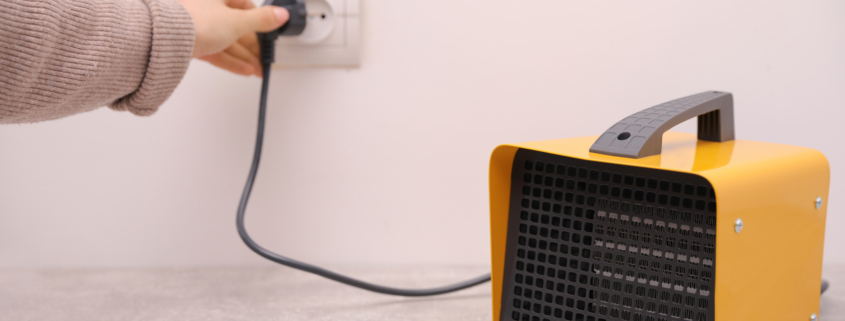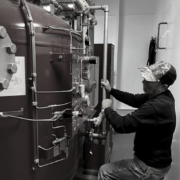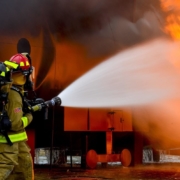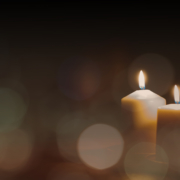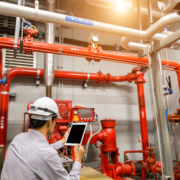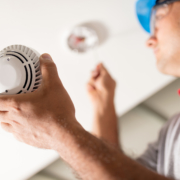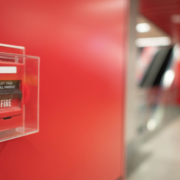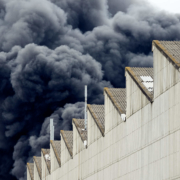How to Prepare Your Business for Cold Weather
(ERRCS ERRCS BABY… too cold too cold)
Cold winter weather doesn’t mean your fire safety can take the back burner (not actually burning, please)
Fire Evacuation
Did you know that your fire evacuation plan will need to alter based on seasonal change? In the winter, there are more factors to consider when creating an evacuation plan.
Maintenance for your building (inside and outside) is crucial during all seasons, but especially during the winter. While it depends on what climate you’re in, snowy conditions bring on a whole new level of hazards when creating a fire evacuation plan.
In the summer, we recommend you keep brush clear around the building to avoid fires. In contrast, during the winter we suggest keeping snow-free pathways and doorways. If there is snow and ice in the walkway, then this creates a hazard for people who are running out of a building. All pathways should be gridded and cleared of snow at all times.
An additional step to take with a commercial building is making sure that all employees are updated with the changes in a fire evacuation plan during the winter. For example, making sure all employees have warm coats in the case of a fire. However impactful the fire, they will likely be standing outside for a long period of time. Additionally, it’s important that employees are not smoking in non-smoking designated areas in the commercial building to prevent more fire risks.
Portable Space Heaters
Electrical fires are a common occurrence during winter. The NFPA reports that there are 45,000 electrical fires a year, with one of the main culprits being portable space heaters. While there are some sources that recommend banning space heaters altogether and just increasing the overall temperature in your building, that might not be a realistic option.
When using a portable space heater, it’s important to keep the heater on a flat surface at all times. So, the preferred spaces to keep your heater are floors and counters (please don’t keep your space heater balanced on your bedstand). The U.S. Fire Administration suggests only having one appliance plugged into an outlet at one time, and avoiding using extension cords at all costs.
Another tip from the U.S. Fire Administration that’s crucial to implement in your commercial building is having space heaters that have an automatic shut-off. This means that if a space heater tips over, it will shut off. This is especially true for commercial buildings or warehouses that have multiple space heaters.
Power Outages and Generators
Generators are another culprit for starting winter fires. Most commercial buildings and warehouses have generators in case of a power outage. In California, the power companies implement routine “brownouts” to avoid fires with windy conditions, making generators the new norm.
With the influx of generators being used, there has been an increase in electrical fires during both the summer and winter months. A good rule of thumb to follow when using a generator is not to keep it on if nobody is in the building to monitor its use. Aside from making sure a generator is in a ventilated area with working carbon monoxide alarms, the NFPA also gives instructions for fueling a generator.
“Turn off generators and let them cool down before refueling. Never refuel a generator while it is hot. Store fuel for the generator in a container that is intended for the purpose and is correctly labeled as such.”
Winter Storms
Lighting McQueen isn’t the only one leaving scorch-marks in his wake.
While an animated car from a Pixar movie is not going to start a fire during a winter storm, lighting is a real concern for fire safety. With winter storms the high chance of lightning causes increased concern for fires. Oftentimes if the storm is really bad, a county will perform a ‘brown out’ as mentioned above. If this isn’t the case, then the NFPA has steps to take to prevent lightning-induced winter fires as much as possible from lightning.
High winds can cause downed power lines increasing the risk of electrocution and fire. In addition to having an evacuation that is clearly communicated to all employees, the NFPA states, “Always assume fallen power lines are energized. Stay away from the area and report any downed lines to authorities immediately.” This is especially true for commercial buildings that are surrounded by power lines.
Fireplace Use
There’s nothing as cozy as cuddling up in front of a big fireplace, especially during one of those “brownouts” we’ve referred to. But fireplaces offer their own set of risks.
When using a fireplace, maintenance is key. The NFPA recommends that you perform an annual inspection of your vents and chimney by a professional. They also suggest storing cooled ashes from your fireplace in a metal container that is sealed tight outside, with at least 10 feet of distance from any buildings.
In addition to keeping up with maintenance with your fireplace, it’s important to keep track of sparks that could ignite. Keeping a glass or metal screen in front of your fireplace is one simple way to keep sparks at bay.
Safety Inspections in the winter
In addition to getting your chimney and vents inspected, VFS Fire & Security Services recommends regular inspections on your commercial buildings.
Fire safety inspections are pre-arranged preventive measures to keep your buildings, assets, and the people you care about safe. They help building owners and managers to identify potential fire hazards and to make the necessary changes before a catastrophe. Compliance with fire safety inspections and guidelines is mandatory and failure to stay on top of scheduled maintenance can have consequences from a regulatory standpoint as well as added risk to your business and staff.
Worried about not meeting all the NFPA guidelines for winter storms and fire protection for your commercial building? Learn what fire safety inspections you need for your commercial building here on our blog.


